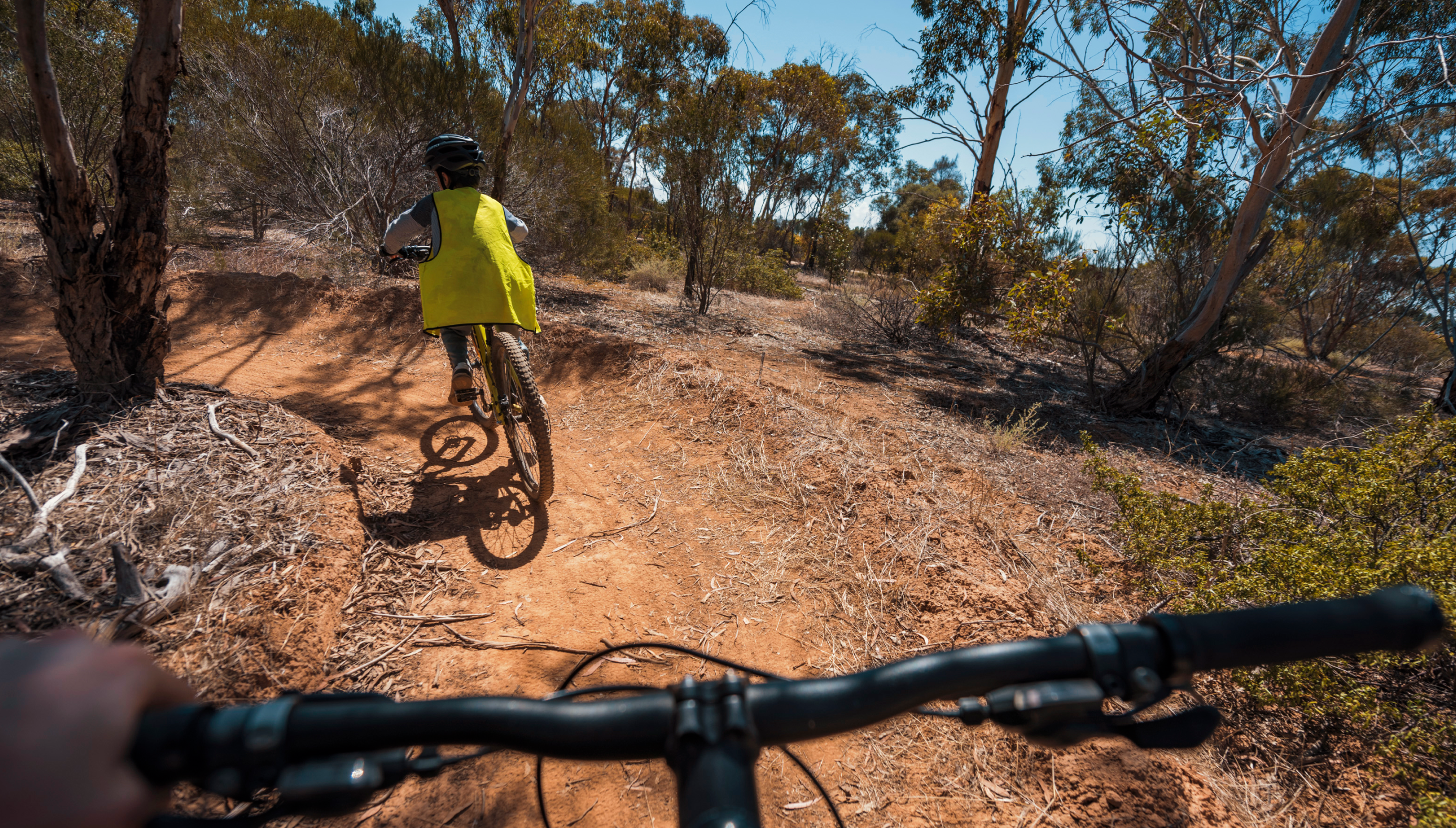Remote Australia is full of hidden beauty but there are always risks when stepping off the beaten track. To help you feel prepared for what the outdoors might throw at you, we’ve put together a summary of the most commonly seen injuries and conditions within camps and journeys and how we manage them as well as a handy guide to preparing an essentials pack for exploring the outback.
COMMON INJURIES
ROLLED ANKLES AND KNEES
Often in a remote area, there is a requirement for extensive walking. If it’s within remote Australia, it is likely for terrain to be uneven and inconsistent. It will come as little surprise the most common injuries encountered in remote programs are rolled ankles and sore knees. These injuries can vary significantly in severity.
If the condition is not severe, treatment might just involve taking a rest sooner on the bushwalk than anticipated and, where possible, allowing the injured person to ice their knee or ankle in a creek before slowly proceeding to camp. The joint would typically be taped or strapped. Every facilitator on these hikes is equipped with a hiking pole and these can be used to take some of the pressure and weight off a sore joint and helps to stabilise walking on uneven ground.
Students also have a responsibility to each other in scenarios where a peer is injured. The weight of an injured student’s pack can be distributed among the group and each person is encouraged to show empathy and check in when one of their group is struggling.
In an extreme case, campers may need to be transported away from camp to be evaluated by a medical professional.
ABRASIONS
When a cut or abrasion injury happens, the most important first step is to clean the injury out thoroughly with clean water suitable for drinking. All group leaders are equipped with a robust first aid kit containing saline and iodine to safeguard against infection when moving around in remote Australia. After the wound is disinfected, it is important it is covered to avoid dirt and germs while the injured person continues activities. The wound should be checked, cleaned and re-dressed each morning and evening to ensure there is little chance of infection.
It is also advised that the area is covered by clothing where possible throughout the days until the wound has fully healed.
HEAT STROKE AND DEHYDRATION
The most important consideration for heat stroke and dehydration is preparation. This means consciously drinking water and eating, especially on days that are particularly active. On The Outdoor Education Group (OEG) camps, snacks are often purposely salty as sodium will help to replenish electrolytes lost throughout the day and also help with cramping.
On particularly hot days, consideration adjustments are made including shortening bushwalks, switching to lighter packs with just essentials and shade can be carried and set up for breaks where there is insufficient natural shade. Students are also advised to bring a long-sleeved shirt and a wide-brimmed hat for added sun protection.
If, despite all of these prevention methods, a participant does become dehydrated or is afflicted with sun stroke, they are provided the time and space to rest, recover and rehydrate. Facilitators are equipped with electrolyte packets which can be given to affected students to support recovery.
GASTRO SYMPTOMS
During trips away from camps, each group is equipped with a handwashing station with soap and sanitiser. If there are any participants experiencing gastro symptoms, personal hygiene is the top priority to stop any potential spread throughout the group.
The person experiencing gastro symptoms would be isolated from the rest of the group - whether in their own tent or cabin. They would also be given a toilet facility to use that isn’t being used by any other group members. In a remote environment, a group facilitator would ensure there was a toilet hole ready to use, a thoughtful distance from the isolated tent.
SNAKE OR SPIDER BITES
While snake bites are uncommon on camps, facilitators are typically leading hikes on tracks and are equipped with gaiters (a thick protective guard either attached over pants or part of the pants that prevents a venomous snake bite) which significantly lowers the risk of snake bite.
If a snake bite were to occur, the group would be immediately stopped, the bite wound would be wrapped, and the injured person would be transported away from camp to be treated by a medical professional.
Most spider bites, on the other hand, can be treated in much the same way as a cut or abrasion. It is crucial to keep the wound clean and dressed to avoid infection. If the bite were to become inflamed or painful, the student would be taken to be assessed and treated by a medical professional. In many cases, once the student received medication, they would be able to return to camp to finish the program.
WHAT SHOULD I HAVE IN MY PACK FOR REMOTE ACTIVITIES
Whether you are an experienced adventurer or are starting out exploring remote Australia, we’ve put together a list of the essentials to include in your pack to keep yourself safe.
- Sanitiser
- Ample clean drinking water
- Communication device equipped for remote areas (PLB or Satellite phone)
- Shelter
- First Aid Kit: bandaids, saline, strapping tape, snakebite bandage, scissors are must-haves
- Electrolyte packs (these are also crucial in cold conditions. Many people forget to hydrate in the cold)
- A method of heating water: a lighter and small pot
- Rain jacket (helps guard from wind)
- Whistle: A low energy way to get attention in an emergency situation
- Snacks: preferably something salty
- Sun protection: sunglasses, hat, sunscreen, long-sleeved breathable shirt
- A plastic bag for disposal of any first aid or snacks packaging
- Toilet paper or tissues
- Torch
